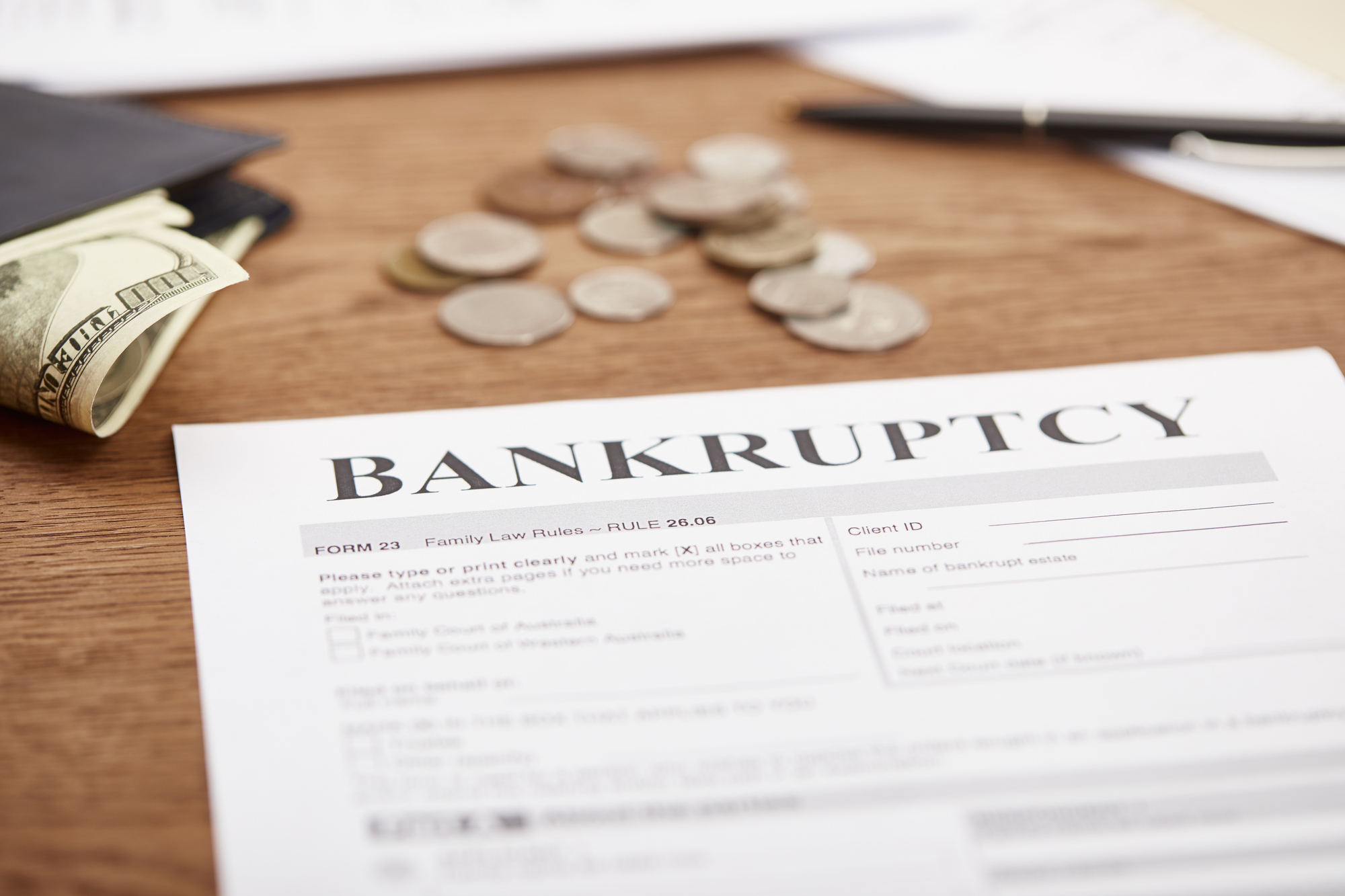When a small business can’t pay all its debts as they come due sometimes the right option for it is to reorganize under the protection of the bankruptcy court. If you qualify, a small business bankruptcy might be the right option for you. A Chapter 11 Subchapter V bankruptcy allows small businesses to reorganize without stopping operations.
What is Subchapter V of Chapter 11?
Chapter 11 Subchapter V (often referred to as “Subchapter 5” or “Subchapter V”) was added to the Bankruptcy Code by the Small Business Reorganization Act (SBRA) of 2019. This made it easier and less expensive for small businesses to repay their debts and stay in business. Before Subchapter V many small businesses often couldn’t complete a traditional Chapter 11 case because it was too expensive and hard to do so.
A Subchapter V small business bankruptcy streamlines the process and makes it less expensive. This new form of bankruptcy allows small business owners to retain their equity, and their businesses to continue operations without full debt repayment.
How is Subchapter V Different from a Traditional Business Bankruptcy?
Chapter 11 is one of the 3 most common types of bankruptcy filed by consumers and businesses:
- Chapter 7, the “traditional” form of bankruptcy, which liquidates (sells) an individual’s assets to pay debts
- Chapter 11, which allows businesses (and individuals with large debts) to reorganize to restore profitability instead of liquidating by making payments on their debts over a period of time (usually 3 – 5 years)
- Chapter 13, which allows individual consumers and sole proprietors (within certain debt limits) to repay a percentage of their debts over a period of time (usually 3 years) on an installment plan
In a traditional Chapter 11 business bankruptcy filing, businesses submit a plan of reorganization to the bankruptcy court setting out how they will repay their debts while staying in business. This plan can include downsizing operations, rejecting unfavorable leases, and selling property or equipment while making payments from revenue or the sale of assets. The plan is reviewed by the bankruptcy court and the creditors. The creditors will vote on the proposed plan.
If the plan is approved, some of the debtor’s obligations may be partially repaid under terms negotiated with creditors, while they may be released from paying other debt, known as having debt discharged. Even if the creditors object to the plan, the court may still approve the plan if it’s fair to the creditors, and meets other requirements in what is known as a “cramdown.” Once the plan is approved it becomes an agreement between the debtor and its creditors that can be enforced by the court, and creditors are prevented from taking steps to collect any portion of the debt not required to be paid by the plan.
While a traditional Chapter 11 case can help a business reorganize, the process is complicated and administratively intensive. The administrative expenses are significant. Not only do you have to pay your attorney, but you also have to pay a quarterly fee to the United States Trustee’s Office (the “USTO”) based on your total revenues per quarter. The USTO administers all bankruptcy cases. Sometimes there is also an Unsecured Creditors, which is a group of your creditors whose claims are not protected by an interest in your property who band together in the case to protect their interests. Generally, this only happens in the larger cases, but if a Creditors Committee is formed, this is another cost your company will pay for. For a small business bankruptcy these additional expenses make a Chapter 11 business bankruptcy filing risky. Because of these administrative hurdles and expenses, many small business bankruptcies failed to help those businesses actually reorganize. Congress created the Subchapter V small business bankruptcy to reduce these expenses, expand the accessibility of Chapter 11 reorganization to smaller businesses, and increase the likelihood of successful reorganizations.
Interested in our services?
If you would like assistance with this or any other compliance matter, please contact Nancy at N D Greene PC by clicking on schedule an appointment.
SCHEDULE AN APPOINTMENTIn essence, the Subchapter V process is a hybrid between the individual Chapter 13, and the more traditional Chapter 11 process. It allows small business debtors to benefit from the lessons learned from the Chapter 13 bankruptcies (individual reorganizations). In a Subchapter V small business bankruptcy, a long of the ponderous and expensive administrative hurdles have been removed or otherwise significantly streamlined. The result is nice blend of function that is very business friendly. Even the forms that are required for the monthly operating reports have been greatly simplified. A Subchapter V:
- Sets debt limit thresholds, subject to regular adjustment, to designate small business debtors
- Can only be filed by debtors (the small businesses) and not their creditors
- Speeds up the Plan of Reorganization approval process
- Allows certain payments normally due at the time of bankruptcy to be spread out over long-term installments to make them more affordable
- Assigns a trustee for oversight of every case
- Eliminates the quarterly trustee fees
- Eliminates the automatic appointment of a committee of creditors
- Allows debtors to retain equity in their business and to continue managing it
- Allows debtors to modify terms of loans that used their personal residence as collateral
- Eliminates the disclosure statement filed along with a Plan of Reorganization needed in a traditional Chapter 11 that summarized their assets, liabilities and business affairs
- Gives the bankruptcy judges more discretion to approve repayment plans over creditor objections
- Provides that only the debtor can file a plan of reorganization where in a traditional Chapter 11 the debtor only has limited protection from competing plans
These changes make it more likely that small businesses can reorganize their affairs in bankruptcy without being crushed by the administrative process and related financial expense.
So, how does this all work?
To start a Subchapter V small business bankruptcy, you file a petition with the bankruptcy court that has jurisdiction where your business is located. The court appoints a trustee to oversee your case and facilitate the development of a reorganization plan acceptable to you and your creditors. Unlike a traditional Chapter 11 Trustee, a Subchapter V Trustee plays a more active role in the case and is closer to an advocate or mediator between the debtor and its creditors. The trustee is paid an hourly fee for this service, and your plan must include provisions for paying your trustee.
You will have a meeting of creditors, where the trustee will ask you about your financial situation. Your creditors will also have the opportunity to ask questions at this meeting. You must submit monthly operating reports disclosing the financial operations of your business. From the day you file your petition, you should begin discussions with your creditors about the terms of your plan of reorganization.
Within 90 days of filing your case you must file a plan of reorganization. Ideally, you want to propose a plan of reorganization that your creditors (or at least the majority of them) will agree to so start these negotiations as early as possible. Your Subchapter V Trustee can assist with this process. Your plan must estimate how much disposable income (income after payment of certain debts), you will have to during this time, which will help calculate your installment amounts. You must submit supporting documentation with you plan to show that the projections are feasible. This documentation can include balance sheets, profit and loss statements, cash-flow projections, tax returns and other information depending on the circumstances.
Once you submit your plan of reorganization, the court and your creditors will review your plan. Approval of your plan of reorganization requires consideration of the following issues:
- Is your proposed repayment schedule feasible (likely to succeed without need for further reorganization)?
- Does your plan protect the best interests of your creditors by repaying them at least as much as they would get if your business were liquidated under Chapter 7?
- Is your plan fair and equitable to your creditors?
- Was your plan proposed in good faith?
In general, the court will approve a plan of reorganization if it pays the creditors more than they would have been paid if you sold everything on the day you filed bankruptcy, shows you can make the proposed payments, and gives the creditors options if you don’t.
With a “consensual plan,” your creditors approve of your plan, and you will be discharged from some of your debt liability under the negotiated terms at the time your plan is approved by the court. Under a “cramdown plan,” your creditors don’t approve of the terms you proposed, but the court does because those terms were fair and reasonable, your debt isn’t discharged until you complete your installment payments. When your plan is approved, you will continue running your business while you repay your creditors under the terms agreed upon. If you default on your payments, your creditors can take the actions set out in your plan under the “default” section, which generally means the creditors will have the right to collect the reduced balance.
Interested in our services?
If you would like assistance with this or any other compliance matter, please contact Nancy at N D Greene PC by clicking on schedule an appointment.
SCHEDULE AN APPOINTMENTWho Qualifies for Subchapter V Small Business Bankruptcy?
Qualifying for Chapter 11 Subchapter V Small Business Bankruptcy requires you to meet the debt threshold to qualify as a small business debtor. Normally, this threshold is at $2,725,625 in secured and unsecured non-contingent and liquidated debt, subject to periodic adjustment. However, it was temporarily raised to $7,500,000 under the Coronavirus Aid, Relief, and Economic Security (CARES) Act, and recently this increase was extended. At least half of your debt must come from “business activity” to qualify.
When Is Chapter 11 Subchapter V Bankruptcy a Good Option?
If your small business is struggling, a small business bankruptcy reorganization could get you back on track. A Chapter 11 Subchapter V reorganization can be a useful tool if you realistically think you can restore your business to profitability and repay your debts over the next 3 to 5 years. If your financial projections don’t support restoring profitability and repaying your debts even after a reorganization, you might have to make the hard call and look at a Chapter 7 liquidation.
On the other hand, if all your creditors are willing to negotiate, there are other measures you might pursue. With all your creditors’ consent a receiver or, less formally, a chief structuring officer, can be appointed to mediate a solution between debtors and creditors or even run your business. This solution is often quicker and less costly than undergoing a bankruptcy process. Another option is seeking business financing to help you cover your debts until you can transition to a more profitable reorganization.
Let’s have a discussion about what might be the best fit for your small business.

